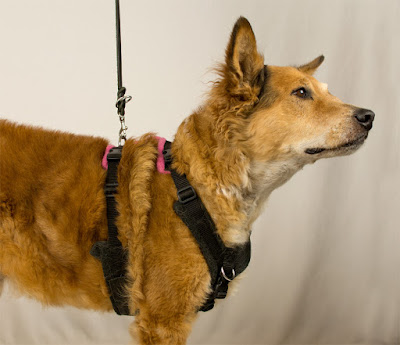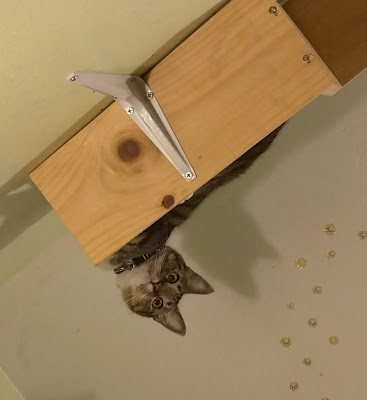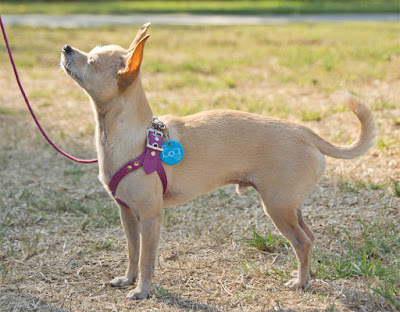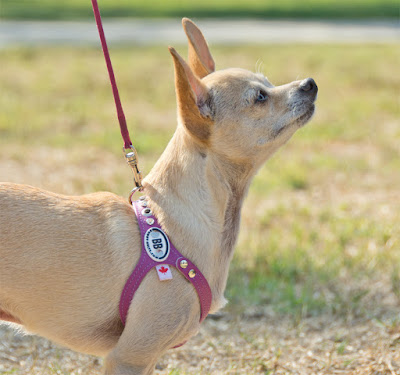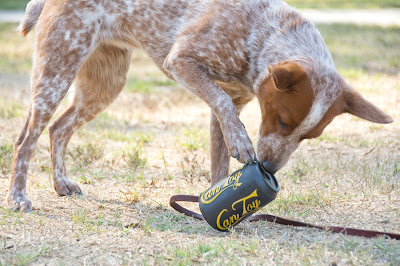For a variety of reasons, I would like to purchase GPS trackers for Zip and Sisci Godzilla. We spend a lot of time outdoors, hiking and working, and once in awhile the girls go out of sight. Godzilla is very good about checking in with me every so often, but Zip tends to run far and wide before it occurs to her to come and find me. In addition to leashes, beacon lights, and reliable recalls, it would be nice to have some technology to help me locate my dogs should they ever not come when I call them.
Pet vs. Hunting Dog Tracking
It turns out there are two basic types of dog tracking devices out there: those for everyday tracking of pets and those for closely tracking hunting dogs. Hunting dog tracking devices are intended to be worn for several hours during a hunting trip. They are made for larger dogs, and can be rather bulky. Designed for use in remote areas, they use radio and GPS tracking technology. Many hunting dog telemetry collars are also electronic training collars, though tracking-only collars are also available. The battery on these tends to last about a day, and the range is about five miles. Telemetry systems for hunting dogs can be a pretty big investment, starting at $300 for an inexpensive one-dog setup, or $460 for a two-dog setup. Multi-dog systems that can pinpoint your dog's location and tell you whether they are running, walking, or standing cost well over $1000.
Pet trackers are relatively inexpensive, designed to be worn all day everyday, just in case pets get lost. These pet wearables usually have enough battery life to last for several days, and are largely modeled after human wearables, with smartphone apps and activity goals. There are a whole lot of them, and they use everything from GPS tracking, to cellular phone networks, to Bluetooth to locate your pet. This is an emerging market, and there are quite a few products in development right now, as well as a few that have been available for a few years already. These feel like they would be a better fit for my situation, and they're significantly cheaper than the hunting dog systems, but I'm having trouble deciding on one.
Once upon a time there was Tagg, a GPS tracking system for your dog that used cellular netorks and GPS tracking to find your lost dog. The system worked with your phone, and sent you alerts if your dog went outside a predetermined area. Then Whistle, maker of pet activity trackers, purchased Tagg and everything went to hell. Though Tagg/Whistle has been around longer than anything else on the market, there still seem to be some major kinks that need to be worked out.
Pros: Uses 3G cellular networks and GPS to locate pets. I get decent cellular signal at work, so this would be useful there.
Cons: The app is quite bloated. It is filled with activity tracking, social media connections, and pictures that detract from the basic locating functionality. It's not terribly accurate. It sends false notifications that your pet has left when they're safe, or fails to report when they actually leave their safe zone. It's slow, only updating every three minutes when actively tracking your lost pet. It also won't let you activate tracking when you know you pet is missing, instead you must wait until the system reads that your pet has left to begin tracking them. The battery life is only decent when near the home base station, which means having my dogs at work with me all day would rapidly drain it on a daily basis. There seem to be a lot of complaints about customer service.

I got to play with a Pod tracker at SuperZoo, and I was incredibly impressed with how light and compact it was. Like the Whistle, it allows you to set up a predetermined safe zone, and will alert you if your pet leaves that zone. However, it has some improvements over Whistle's current system.
Pros: Uses Wifi as well as cellular and GPS tracking, for more accurate indoor locations. Allows the user to set how often the location updates, and the safe zone can just be turned off to save battery life. Is not dependent upon a base station to define safe zone, can be set anywhere. Comes with two removable batteries, so one can always be charged and ready to go. Much smaller than the Whistle tracker, small enough to out on cats and large birds and tiny dogs. The company offers a 50% upgrade to their newest product. Their customer service seems to be really good.
Cons: The Pod tracker only uses 2G cellular networks. In case you hadn't heard, the remaining vestiges of the AT&T 2G network is going down next month. T-Mobile is keeping at least some of their 2G up until 2020, but coverage is certainly not going to get any better. Pod is supposedly going to come out with a 3G version in February...maybe. At SuperZoo they were claiming it would be out before AT&T killed the majority of the 2G network. The current Pod tracker probably wouldn't be able to track my dogs while we are at work, or on hiking trips. Or possibly at all.
Tractive is another GPS+cellular pet tracker. It seems to be a bit more compact than the Whistle, but doesn't offer as many customized options as the Pod.
Pros: Does not seem to need a base station. Allows customized safe zone and alerts if pet leaves that zone.
Cons: Appears to be basically a foreign knockoff of the Whistle, with a lighter but less user-friendly interface and worse customer service. Uses only 2G cellular networks, with no plans to update to something that isn't rapidly becoming obsolete. The annual fee for the device appears to be equal to the purchase price.
The Nuzzle collar is brand new and just started shipping in the last month or two. Unfortunately, this means there aren't yet product reviews out there about the actual battery life, or other ups and downs.
Pros: Uses 3G cellular networks, GPS, and also Bluetooth. Comes with two batteries. Comes with a custom collar, but can be attached to any collar. Offers temperature monitoring.
Cons: Uses a base station, so may be intended for dogs that spend most of their time at home, like the Whistle.
AKC's Link collar is another brand new product that hasn't been widely reviewed yet. Unfortunately, their website is pretty short on information, so I have no idea if it uses 3G cellular networks, or experiences shorter battery life away from its base station. It sounds pretty awesome, but it's hard to tell what actual user experiences are like.
Pros: Specifically can be used to set mobile safe zones for off-leash activity or visiting friends. Temperature monitoring. Supposedly uses an algorithm to determine what counts as intense activity for your dog, versus moderate activity.
Cons: No idea if it uses 3G or not.
This one looks like a significantly more simple product than any of the ones above. The RoamEO is not an activity monitor, it's not a smartcollar, it just tracks your pet. This one just uses GPS, so it should work both in town and way out in the backcountry.
Pros: Has customized safe zone that can be any shape, not just a circle. Safe zone can be mobile for off-leash activity.
Cons: Has 3-5 mile range for active tracking, not sure if it also does remote monitoring.
Coming Soon...
There are some neat-looking smartcollars and pet tracking devices that may be coming out soon, but are not actually shipping yet. The Kyon smartcollar appears to be marketed toward urban dog owners, as its GPS location technology will tell you what floor of a building your pet is on. The Kyon collar is expected to ship in January 2017.
Squeaker's Buddy smartcollar looks pretty amazing, with custom LED light colors and patterns for nighttime safety, as well as the usual suite of smartcollar features. However, it is being developed via Indiegogo campaign, and the updates have been few and far between. Apparently it was fully-funded over a year ago, four months ago they were shooting for a release date of December 2016, and they have not updated in the last four months. It also going to be crazy expensive, $250 for campaign backers and $450 for the general public if it ever comes to market. Wuf is yet another smartcollar with integrated phone app, that may or may not ship in spring of 2017.




















